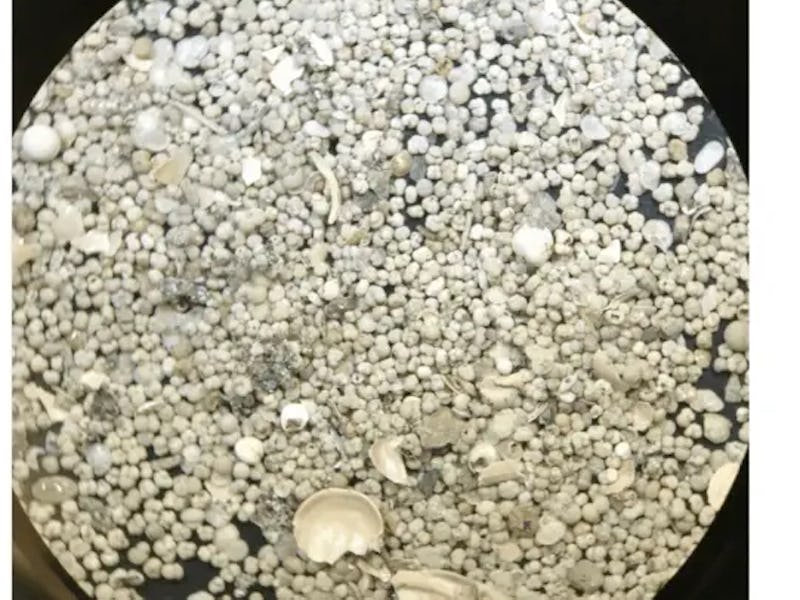Shells of Ancient Ice Age Marine Life Suggest A Common Weather Phenomenon Is About to Get Much Worse
These tiny shells are speaking volumes about climate change and El Niño.

Some 20,000 years ago, when the last ice age was at its peak, a marine animal with an ultrashort lifespan of just one month, really lived in the moment.
In its brief and wondrous life, the single-celled organism, called foraminifera, recorded information about the climate around itself as it lived floating at the top of the ocean. Thousands of years later, scientists have scooped up their tiny shells from the Pacific Ocean seabed to read chemical fingerprints in them for clues about how the climate pattern El Niño once behaved — and what that means for us today.
What scientists found is sobering: Extreme El Niño events could become 40 to 50 percent more frequent, and carrying in tow unusual wildfires, air turbulence, and heavy rainfall.
“It's amazing how, you know, these tiny little plankton shells from 20,000 years ago are informing us about how the oceans might change in the future,” Kaustubh Thirumalai, the study's co-lead author and a University of Arizona assistant professor, tells Inverse. A paper describing the research was published Wednesday in the journal Nature.
Then versus now, versus tomorrow
Some 20,000 years ago, the world was different — but not by much. Sea level was 130 meters lower than it is today, and the missing liquid was locked away as ice. The continents, however, were set largely as they are today, with the Pacific Ocean more or less like it looks now. El Niño, borne out of diminishing westerly Pacific trade winds that cause warmer waters off the coast of South America every two to seven years, likely also existed during the ice age.
El Niño is intrinsic to modern Earth. If Earth is a house, El Niño is like a heat pump: When it kicks in, it makes a big change to how different parts of the house feel. But global warming is like a mighty hammer, capable of such force on the walls that it can drastically alter the stability of the house’s temperature. Thirumalai calls this hammer-like influence “climate forcing.”
A Climate.gov illustration of how Earth may have looked 20,000 years ago, during the Last Glacial Maximum of the Pleistocene Ice Age.
Earth’s climate ‘currency’
El Niño’s “widespread” and “outsized” impacts on the entire planet makes it essential to understand how El Niño will respond to anthropogenic greenhouse gasses.
“El Niño is the currency in which this climate change operates because it affects its sort of day-to-day, season-to-season and year-to-year time scale,” Thirumalai says.
The foraminifera shells reveal that ice age Earth had less El Niño variability than our planet experiences today. Models show future El Niño will have more extreme medians, which means they won’t necessarily get stronger, but they’ll be more likely to happen.
“They may not get necessarily larger, but what seems to be of most concern is they become more frequent. El Niño happens every two to seven years or so. In our future simulations, we're seeing an extreme El Niño — not just any El Niño, extreme El Niños — at least 40 to 50 percent times more likely,” Thirumalai says.
Scientists blended paleontology and climate science to learn how El Niño behaved during the peak of the last ice age. And now, the lives of ancient single-celled creatures have opened up a new window to the future, allowing us to better grasp global warming’s full-scale toll.